The following operations are required for swapping disks in the event of a disk error or for the purpose of preventive maintenance.
Figure 7.21 Disk Swap and Restoration Operation
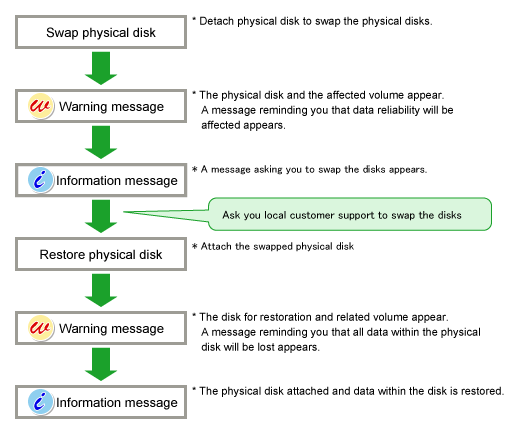
When a disk unit abnormality occurs, contact field engineers to swap the disk units.
In GDS, regardless of hot swap or not, the following procedures are necessary before and after the disk swap.
swap physical disk
restore physical disk
Note
Identifying a Failed Disk Unit
You should pinpoint a hardware error on a disk unit based on, for example, log messages for the disk driver output in the /var/log/messages file. For details, see "D.1.13 Disk Unit Error."
Note
Notes on Physical Disk Swap
See "7.3.4 Swapping Physical Disks Registered with Shadow Classes." and "7.3.5 Notes."
Swap Physical Disk
In order to swap the disk units, you must take the physical disk offline.
The procedures are explained below.
Displaying the status of physical disk
In the Main screen, display the physical disk to be swapped. Click the icon and select the physical disk.
Selecting [Swap Physical Disk]
In the Main screen [Operation] menu, select [Swap Physical Disk].
Figure 7.22 Swap Physical Disk
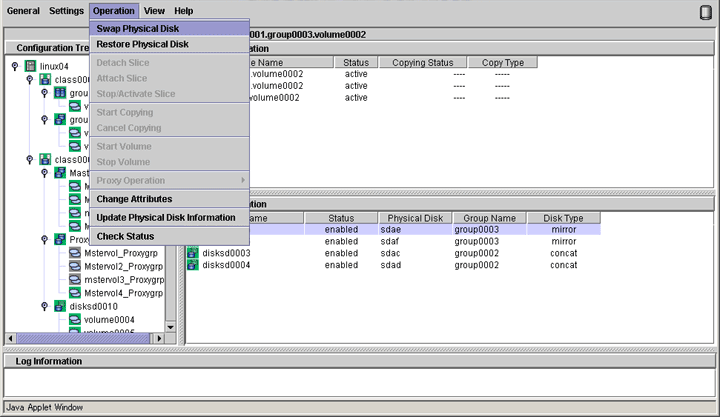
The confirmation screen shown below appears.
To continue the process, click <Yes>. Clicking <No> cancels the physical disk swapping process.
Figure 7.23 Confirming Swap Physical Disk

Requesting the swap of physical disks
Click <Yes>, and a message notifying the offline status appears.
Click <OK>, and request field engineers to swap the disk unit.
Figure 7.24 Notifying Offline Completion

Restore Physical Disk
After swapping the disk units, you must put the swapped physical disk back online.
The procedures are explained below.
Check the device name change
When an internal disk registered in the root class or local class swapped, a physical disk cannot be restored if there is a device name change that means the physical disk name is different from the name at the disk registration. Check that there is no difference between the device name of the swapped internal disk and the device name managed by GDS.
See
For the method to check the device name change, see "7.3.5.4 Swapping Internal Disks Registered with Root Classes or Local."
Selecting the physical disk to restore
Select the physical disk you want to restore.
Selecting [Restore Physical Disk] menu
In the Main screen [Operation] menu, select [Restore Physical Disk].
Figure 7.25 Restore Physical Disk
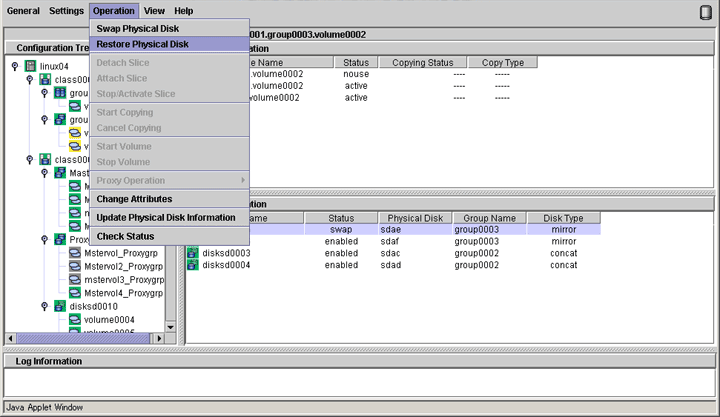
The confirmation screen shown below appears.
To continue the process, click <Yes>. Clicking <No> cancels the physical disk restore process.
Figure 7.26 Confirming Restore Physical Disk
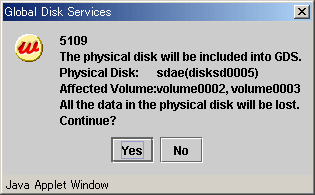
Notifying online status
Click <OK>, and a message notifying the online status appears.
Figure 7.27 Notifying Online Completion
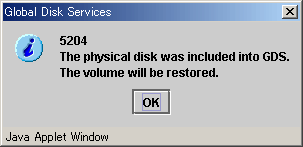
Note
If the I/O Response Time Assurance Function is set
If there is not enough memory the physical disk restoration might become error.
In this case, the following messages are displayed:
5000
Command line output: ERROR: sfdsk driver returned an error, errno=12
Also, a warning message 22018 (WARNING: sfdsk: failed to open disk, no enough address space: ...) is output to the console.
In this situation, perform any of the following actions before starting the physical disk restoration.
(a) Start the system again.
(b) Wait until the memory is freed up.
(c) Increase the memory.
Refer to the installation guide for the necessary memory.
Plan the memory increase if selecting (a) or (b).